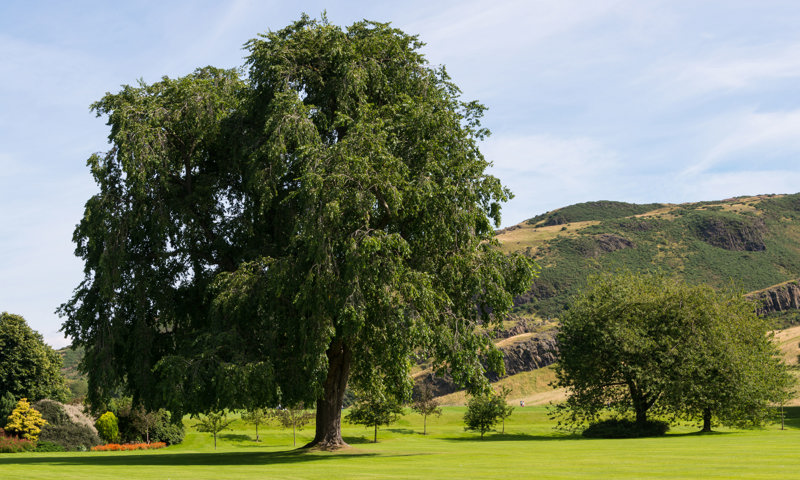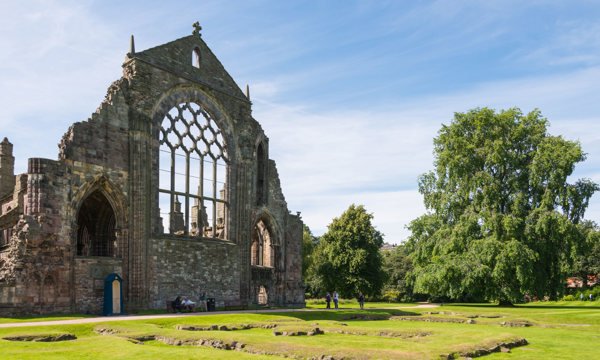Tree experts have been excited by the “discovery” of two mature specimens – until now thought to be extinct in Britain – within Her Majesty The Queen’s garden at the Palace of Holyroodhouse, a stone’s throw away from Edinburgh city centre.
The 100ft-tall Wentworth elms (Ulmus 'Wentworthii Pendula') were spotted by Dr Max Coleman of the Royal Botanic Gardens Edinburgh when he visited the garden to collect some cuttings.
“Such a discovery when the trees in question are just shy of 100 feet and in plain sight does sound rather odd,” Dr Coleman said.
“It is very likely the only reason these rare elms have survived is because Edinburgh City Council has been surveying and removing diseased elms since the 1980s. Without that work many more of the thousands of elms in Edinburgh would have been lost. The success of this programme may be partly demonstrated in the way two rare trees have been preserved.”
Alan Keir, Holyrood Park and Gardens Manager for Historic Environment Scotland, who maintain the Palace Gardens said: “When RBGE got in touch to ask if we could facilitate a walk round the gardens to find cultivars for propagation, we were happy to help - but certainly didn’t expect them to find these rare specimens hidden in plain sight!
The HES gardens team have undertaken careful maintenance of these specimens over the past several years, including crown reduction and limb bracing works, and we’re proud to help look after the only remaining examples of these trees in Britain.”
An attractive cultivar with a “weeping” habit of growth and large glossy leaves, the Wentworth elm was probably introduced to cultivation in the late 19th century. But, while Dr Coleman’s research has been conclusive in determining what they are, where the Wentworth elms came from retains an element of mystery. Now, the detective work is being extended to include research by curators and archivists at the Royal Household, RBGE and beyond. And the likeliest suggestion, in another bizarre twist, is that the trees arrived at Holyrood from RBGE – and survived while their Botanic Garden sibling died.

The archives have revealed that three Wentworth elms arrived at RBGE from Germany in 1902, after which all subsequent records refer to a single tree at the Garden. The single Wentworth elm died in 1996 when it succumbed to Dutch elm disease.
“It is very tempting to speculate that the Wentworth elms at the Palace are the two missing trees from RBGE”, surmised Dr Coleman. “There is anecdotal evidence that the young trees could have come in to RBGE then been grown-on before planting-out in their final positions. Certainly, there was a close relationship between the Palace and the Garden in the early 20th century and the head gardener at Holyrood, William Smith, had trained here. And, although we have no record here of elms going out, we know that a large number of ivy plants went from here to Holyrood to plant round the abbey ruins.”
Whatever the true provenance of the Holyrood Wentworth elms, the story is not yet set to end. The potential of propagation is being considered, with horticulturists now keen to take the story forward into a new era. Should that go ahead and be successful, this majestic weeping tree would be secured for future generations to appreciate.

